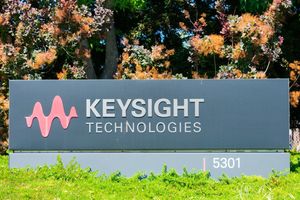
The relentless surge in demand for Artificial Intelligence (AI) is fundamentally transforming the semiconductor industry, driving unprecedented innovation, recalibrating market dynamics, and ushering in a new era of specialized hardware. As of November 2025, this profound shift is not merely an incremental change but a seismic reorientation, with AI acting as the primary catalyst for growth, pushing total chip sales towards an estimated $697 billion this year and accelerating the industry's trajectory towards a $1 trillion market by 2030. This immediate significance lies in the urgent need for more powerful, energy-efficient, and specialized chips, leading to intensified investment, capacity constraints, and a critical focus on advanced manufacturing and packaging technologies.
The AI chip market itself, which topped $125 billion in 2024, is projected to exceed $150 billion in 2025, underscoring its pivotal role. This AI-driven expansion has created a significant divergence, with companies heavily invested in AI-related chips significantly outperforming those in traditional segments. The concentration of economic profit within the top echelon of companies highlights a focused benefit from this AI boom, compelling the entire industry to accelerate innovation and adapt to the evolving technological landscape.
The Technical Core: AI's Influence Across Data Centers, Automotive, and Memory
AI's demand is deeply influencing key segments of the semiconductor industry, dictating product development and market focus. In data centers, the backbone of AI operations, the need for specialized AI accelerators is paramount. Graphics Processing Units (GPUs) from companies like NVIDIA (NASDAQ: NVDA) with its H100 Tensor Core GPU and next-generation Blackwell architecture, remain dominant, while competitors such as Advanced Micro Devices (NASDAQ: AMD) are gaining traction with their MI300 series. Beyond general-purpose GPUs, Tensor Processing Units (TPUs) like Google's 7th-generation Ironwood are becoming crucial for large-scale AI inference, and Neural Processing Units (NPUs) are increasingly integrated into various systems. These advancements necessitate sophisticated advanced packaging solutions such as chip-on-wafer-on-substrate (CoWoS), which are critical for integrating complex AI and high-performance computing (HPC) applications.
The automotive sector is also undergoing a significant transformation, driven by the proliferation of Advanced Driver-Assistance Systems (ADAS) and the eventual rollout of autonomous driving capabilities. AI-enabled System-on-Chips (SoCs) are at the heart of these innovations, requiring robust, real-time processing capabilities at the edge. Companies like Volkswagen are even developing their own L3 ADAS SoCs, signaling a strategic shift towards in-house silicon design to gain competitive advantages and tailor solutions specifically for their automotive platforms. This push for edge AI extends beyond vehicles to AI-enabled PCs, mobile devices, IoT, and industrial-grade equipment, with NPU-enabled processor sales in PCs expected to double in 2025, and over half of all computers sold in 2026 anticipated to be AI-enabled PCs (AIPC).
The memory market is experiencing an unprecedented "supercycle" due to AI's voracious appetite for data. High-Bandwidth Memory (HBM), essential for feeding data-intensive AI systems, has seen demand skyrocket by 150% in 2023, over 200% in 2024, and is projected to expand by another 70% in 2025. This intense demand has led to a significant increase in DRAM contract prices, which have surged by 171.8% year-over-year as of Q3 2025. Severe DRAM shortages are predicted for 2026, potentially extending into early 2027, forcing memory manufacturers like SK Hynix (KRX: 000660) to aggressively ramp up HBM manufacturing capacity and prioritize data center-focused memory, impacting the availability and pricing of consumer-focused DDR5. The new generation of HBM4 is anticipated in the second half of 2025, with HBM5/HBM5E on the horizon by 2029-2031, showcasing continuous innovation driven by AI's memory requirements.
Competitive Landscape and Strategic Implications
The profound impact of AI demand is creating a highly competitive and rapidly evolving landscape for semiconductor companies, tech giants, and startups alike. Companies like NVIDIA (NASDAQ: NVDA) stand to benefit immensely, having reached a historic $5 trillion valuation in November 2025, largely due to its dominant position in AI accelerators. However, competitors such as AMD (NASDAQ: AMD) are making significant inroads, challenging NVIDIA's market share with their own high-performance AI chips. Intel (NASDAQ: INTC) is also a key player, investing heavily in its foundry services and advanced process technologies like 18A to cater to the burgeoning AI chip market.
Beyond these traditional semiconductor giants, major tech companies are increasingly developing custom AI silicon to reduce reliance on third-party vendors and optimize performance for their specific AI workloads. Amazon (NASDAQ: AMZN) with its Trainium2 and Inferentia2 chips, Apple (NASDAQ: AAPL) with its powerful neural engine in the A19 Bionic chip, and Google (NASDAQ: GOOGL) with its Axion CPUs and TPUs, are prime examples of this trend. This move towards in-house chip design could potentially disrupt existing product lines and services of traditional chipmakers, forcing them to innovate faster and offer more compelling solutions.
Foundries like Taiwan Semiconductor Manufacturing Company (TSMC) (NYSE: TSM) and Samsung Electronics (KRX: 005930) are critical enablers, dedicating significant portions of their advanced wafer capacity to AI chip manufacturing. TSMC, for instance, is allocating over 28% of its total wafer capacity to AI chips in 2025 and is expanding its 2nm and 3nm fabs, with mass production of 2nm technology expected to begin in 2025. This intense demand for advanced nodes and packaging technologies like CoWoS creates capacity constraints and underscores the strategic advantage held by these leading-edge manufacturers. Memory manufacturers such as Micron Technology (NASDAQ: MU) and SK Hynix (KRX: 000660) are also strategically prioritizing HBM production, recognizing its critical role in AI infrastructure.
Wider Significance and Broader Trends
The AI-driven transformation of the semiconductor industry fits squarely into the broader AI landscape as the central engine of technological progress. This shift is not just about faster chips; it represents a fundamental re-architecture of computing, with an emphasis on parallel processing, energy efficiency, and tightly integrated hardware-software ecosystems. The acceleration towards advanced process nodes (7nm and below, including 3nm, 4/5nm, and 2nm) and sophisticated advanced packaging solutions is a direct consequence of AI's demanding computational requirements.
However, this rapid growth also brings significant impacts and potential concerns. Capacity constraints, particularly for advanced nodes and packaging, are a major challenge, leading to supply chain strain and necessitating long-term forecasts from customers to secure allocations. The massive scaling of AI compute also raises concerns about power delivery and thermal dissipation, making energy efficiency a paramount design consideration. Furthermore, the accelerated pace of innovation is exacerbating a talent shortage in the semiconductor industry, with demand for design workers expected to exceed supply by nearly 35% by 2030, highlighting the urgent need for increased automation in design processes.
While the prevailing sentiment is one of sustained positive outlook, concerns persist regarding the concentration of economic gains among a few top players, geopolitical tensions affecting global supply chains, and the potential for an "AI bubble" given some companies' extreme valuations. Nevertheless, the industry generally believes that "the risk of underinvesting is greater than the risk of overinvesting" in AI. This era of AI-driven semiconductor innovation is comparable to previous milestones like the PC revolution or the mobile internet boom, but with an even greater emphasis on specialized hardware and a more interconnected global supply chain. The industry is moving towards a "Foundry 2.0" model, emphasizing technology integration platforms for tighter vertical alignment and faster innovation across the entire supply chain.
Future Developments on the Horizon
Looking ahead, the semiconductor industry is poised for continued rapid evolution driven by AI. In the near term, we can expect the aggressive ramp-up of HBM manufacturing capacity, with HBM4 anticipated in the second half of 2025 and further advancements towards HBM5/HBM5E by the end of the decade. The mass production of 2nm technology is also expected to commence in 2025, with further refinements and the development of even more advanced nodes. The trend of major tech companies developing their own custom AI silicon will intensify, leading to a greater diversity of specialized AI accelerators tailored for specific applications.
Potential applications and use cases on the horizon are vast, ranging from increasingly sophisticated autonomous systems and hyper-personalized AI experiences to new frontiers in scientific discovery and industrial automation. The expansion of edge AI, particularly in AI-enabled PCs, mobile devices, and IoT, will continue to bring AI capabilities closer to the user, enabling real-time processing and reducing reliance on cloud infrastructure. Generative AI is also expected to play a crucial role in chip design itself, facilitating rapid iterations and a "shift-left" approach where testing and verification occur earlier in the development process.
However, several challenges need to be addressed for sustained progress. Overcoming the limitations of power delivery and thermal dissipation will be critical for scaling AI compute. The ongoing talent shortage in chip design requires innovative solutions, including increased automation and new educational initiatives. Geopolitical stability and the establishment of resilient, diversified supply chains will also be paramount to mitigate risks. Experts predict a future characterized by even more specialized hardware, tighter integration between hardware and software, and a continued emphasis on energy efficiency as AI becomes ubiquitous across all sectors.
A New Epoch in Semiconductor History
In summary, the insatiable demand for AI has ushered in a new epoch for the semiconductor industry, fundamentally reshaping its structure, priorities, and trajectory. Key takeaways include the unprecedented growth of the AI chip market, the critical importance of specialized hardware like GPUs, TPUs, NPUs, and HBM, and the profound reorientation of product development and market focus towards AI-centric solutions. This development is not just a growth spurt but a transformative period, comparable to the most significant milestones in semiconductor history.
The long-term impact will see an industry characterized by relentless innovation in advanced process nodes and packaging, a greater emphasis on energy efficiency, and potentially more resilient and diversified supply chains forged out of necessity. The increasing trend of custom silicon development by tech giants underscores the strategic importance of chip design in the AI era. What to watch for in the coming weeks and months includes further announcements regarding next-generation AI accelerators, continued investments in foundry capacity, and the evolution of advanced packaging technologies. The interplay between geopolitical factors, technological breakthroughs, and market demand will continue to define this dynamic and pivotal sector.
This content is intended for informational purposes only and represents analysis of current AI developments.
TokenRing AI delivers enterprise-grade solutions for multi-agent AI workflow orchestration, AI-powered development tools, and seamless remote collaboration platforms.
For more information, visit https://www.tokenring.ai/.


















